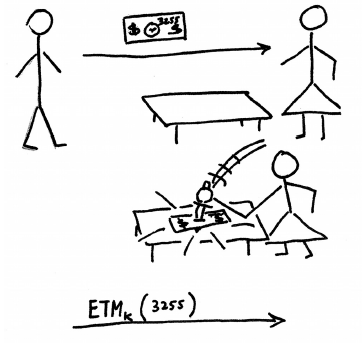We have a new paper on the strategic vulnerability created by the plan to replace Britain’s 47 million meters with smart meters that can be turned off remotely. The energy companies are demanding this facility so that customers who don’t pay their bills can be switched to prepayment tariffs without the hassle of getting court orders against them. If the Government buys this argument – and I’m not convinced it should – then the off switch had better be closely guarded. You don’t want the nation’s enemies to be able to turn off the lights remotely, and eliminating that risk could just conceivably be a little bit more complicated than you might at first think. (This paper follows on from our earlier paper On the security economics of electricity metering at WEIS 2010.)
Category Archives: Protocols
IEEE best paper award
Steven Murdoch, Saar Drimer, Mike Bond and I have just won the IEEE Security and Privacy Symposium’s Best Practical Paper award for our paper Chip and PIN is Broken. This was an unexpected pleasure, given the very strong competition this year (especially from this paper). We won this award once before, in 2008, for a paper on a similar topic.

Update (2010-05-28): The photo now includes the full team (original version)
Romantic cryptography
The aptly-named Journal of Craptology (est. 1998) has just published a special Valentine Day issue. It contains a silly piece on Romantic Cryptography that we originally discussed in 1999 in our Friday meetings.
New attacks on HMQV
Many people may still remember the debates a few years ago about the HMQV protocol, a modification of MQV with the primary aim of provable security. Various attacks were later discovered for the original HMQV. In the subsequent submission to the IEEE P1363 standards, the HMQV protocol has been revised to address the reported weaknesses.
However, the revised HMQV protocol is still vulnerable. In a paper that I presented at Financial Cryptography ’10, I described two new attacks. The first presents a counterexample to invalidate the basic authentication feature in the protocol. The second is generally applicable to other key exchange protocols, despite that many have formal security proofs.
The first attack is particularly concerning since the formal security proofs failed to detect this basic flaw. The HMQV protocol explicitly specifies that the Certificate Authority (CA) does not need to validate the public key except checking it is not zero. (This is one reason why HMQV claims to be more efficient than MQV). So, the protocol allows the CA to certify a small subgroup element as the user’s “public key”. Then, anyone who knows this “public key” can successfully pass authentication using HMQV (see the paper for details). Note, in this case, a private key doesn’t exit, but the authentication is successful. What is the “authentication” in HMQV based on?
The HMQV author acknowledges this attack, but states it has no bad effects. Although I disagree, this will be up to the reader to decide.
Updates:
Multichannel protocols against relay attacks
Until now it was widely believed that the only defense against relay attacks was distance bounding. In a paper presented today at Financial Cryptography 2010 we introduce a conceptually new approach for detecting and preventing relay attacks, using multichannel protocols.
We have been working on multichannel protocols since 2005. Different channels have different advantages and disadvantages and therefore one may build a better security protocol by combining different channels for different messages in the protocol trace. (For example a radio channel like Bluetooth has high bandwidth, low latency and good usability but leaves you in doubt as to whether the message really came from the announced sender; whereas a visual channel in which you acquire a barcode with a scanner or camera has low bandwidth and poorer usability but gives stronger assurance about where the message came from.)
In this new paper we apply the multichannel paradigm to the problem of countering relay attacks. We introduce a family of protocols in which at least one message is sent over a special “unrelayable” channel. The core idea is that one channel connects the verifier to the principal with whom she shares the prearranged secret K, while another channel (the unrelayable one) connects her to the prover who is actually in front of her; and the men in the middle, however much they relay, can’t get it right on both of these channels simultaneously.
We convey this idea with several stories. Don’t take them too literally but they let us illustrate and discuss all the key security points.

This work is exciting for us because it opens up a new field. We look forward to other researchers following it up with implementations of unrelayable channels and with formal tools for the analysis of such protocols.
Frank Stajano, Ford-Long Wong, Bruce Christianson. Multichannel protocols to prevent relay attacks (preliminary; the final revised version of the full paper will be published in Springer LNCS)